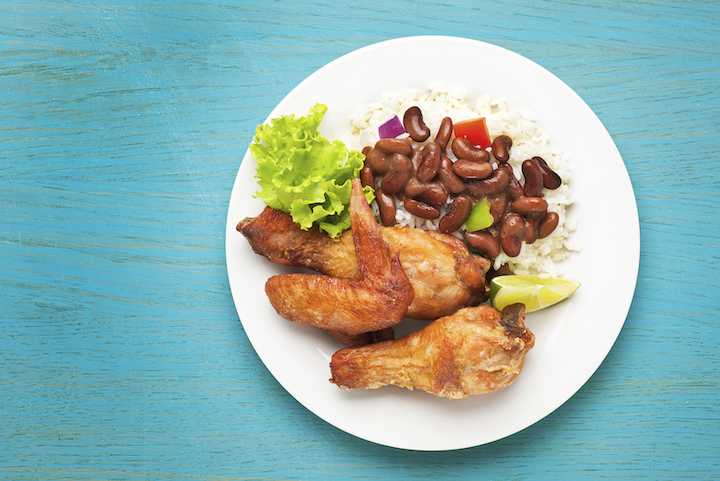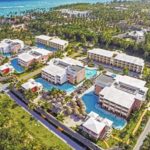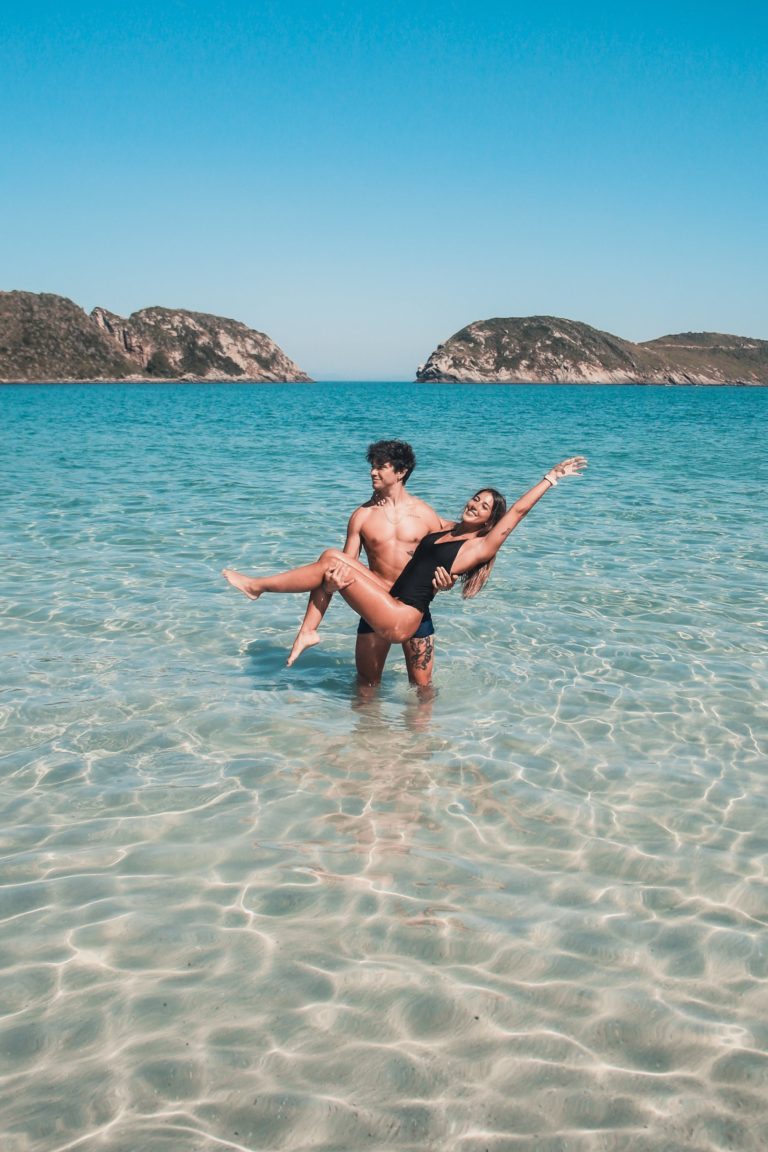Dominican Republic Travel Guide
The Dominican Republic is an amazing island in the Caribbean. It has a party atmosphere but some of the most beautiful shoreline and beaches. If you are planning a trip to the Dominican Republic? Let us guide you through all the info you need to know before your visit.

By Kavonda L. Rogers
History
The eastern half of the island of Hispaniola, now known as the Dominican Republic, is the earliest of all the European colonies in the western hemisphere. The settlement of Santo Domingo is established on the south coast in 1496 by Diego Columbus, younger brother of the explorer. It becomes the main base for Spanish activities until the conquest of Mexico.
Before Christopher Columbus arrived, the indigenous Taínos (meaning ‘Friendly People’) lived on the island now known as Hispaniola. Taínos gave the world sweet potatoes, peanuts, guava, pineapple, and tobacco – even the word ‘tobacco’ is Taíno in origin. Yet the Taínos themselves
were wiped out by Spanish diseases and slavery. Of the 400, 000 Taínos that lived on Hispaniola at the time of European arrival, fewer than 1000 were still alive 30 years later. None exist today.
Around 1930, the Dominican Republic found itself under the control of the ruthless dictator Rafael Leónidas Trujillo Molina, who ruled the country until 1961. The civil war of 1965, the country’s last significant period of strife, was ended by a United States-led intervention and was
followed by the authoritarian rule of Joaquín Balaguer, the leader from 1966–1978. Since that time, the Dominican Republic has moved steadily toward representative democracy and has been led by Leonel Fernández for most of the time after 1996.
Money
The Dominican monetary unit is the peso, indicated by the symbol RD$ (or sometimes just R$). Though the peso is technically divided into 100 centavos (cents), prices are usually rounded to the nearest peso. There are one- and five-peso coins, while paper money comes in denominations of 10, 20, 50, 100, 500, 1000 and 2000 pesos. Many tourism-related businesses, including most midrange and top-end hotels, list prices in US dollars, but accept pesos at the going exchange rate.
Credit Cards issued by a bank in your home country (Visa, Master Card, American Express) are accepted at most tourist establishments, restaurants, and shops. However, you will find that many local restaurants here on the north coast do not take credit cards – strictly cash. The reason is they are charged a large tax if they accept a credit card, making it better for them financially to simple handle cash transactions.
Major debit cards (American Express, Diners Club, MasterCard, and Visa) are accepted at all Dominican Republic bank machines. Charges can be stiff – $5 per transaction.
It’s always a good idea to carry around some cash for small expenses, like cab rides, or for that rare occasion when a restaurant or small shop doesn’t take plastic, which can happen if you’re dining at a neighborhood joint or buying from a small vendor. U.S. dollars are accepted everywhere.
ATMs (cajeros automáticos) are common in the Dominican Republic and are, without question, the best way to obtain Dominican pesos and manage your money. Banks with reliable ATMs include Banco Popular, Banco Progreso, BanReservas, Banco León and Scotiabank. Most charge ATM fees (around RD$195 on average); it’s worth checking with your domestic bank before you travel whether there are additional fees on their end. And there’s a range of frustratingly low maximum withdrawal limits – BanReservas is RD$2000 and Banco Progreso RD$4000 – and limits to the number of withdrawals per day. As in any country, be smart about where and when you withdraw cash. Most ATMs are not in the bank itself but in a small booth accessible from the street (and thus available 24 hours).
Climate

The Dominican Republic is an all-year destination; the temperature remains constant almost year round. The annual average temperature is 25 degrees Celsius (77°Fahrenheit). Rainfall is very seasonal. The wettest months are October through to April in the north, with May to November being rainy season in the south. The south can also be struck by hurricanes during August and September. The best time to travel to the Dominican Republic is between November and April.
Electricity
Power plugs and sockets are of type A and B. The standard voltage is 110V and the standard frequency is 60 Hz.
Technology & Communications
Telecommunications in the Dominican Republic can be more reliable than electricity. Although, providers in the DR often receive complaints
about their standards of service. Even so, internet service is widely available in the Dominican Republic, while not on the cheap side. Claro, Tricom, and Telecom are the main providers. Cell phone services in the Dominican Republic are average for a Caribbean country. Cellphone and landline coverage are good for most towns and cities. Beyond that, coverage can be nonexistent. Therefore, only around 15 – 20% of the country has coverage. Furthermore, only major locations like Santo Domingo, San Pedro de Maco, and Punta Cana have partial 4G coverage.
Infrastructure & Transportation

Infrastructure in the Dominican Republic is poor and unevenly distributed but is being improved. In overview, cities, and towns that attract tourists have a well-developed supporting infrastructure. On the other hand, rural and more remote areas receive little support. The country’s
Dominican Liberation Party (PLD), in power for the past decade, has made country-wide improvements. These include road systems, availability of air travel, ports, and telecommunications. It has primarily invested in towns that attract tourists. The five main highways in the Dominican Republic are well paved and maintained and connect all major cities to the coastal tourist zones. Like any developing nation, many roads branching out to the smaller towns remain unpaved and in poor condition.
Emergency Services
The number for the English speaking tourist police (CESTUR) is +1-809-200-3500. In Santo Domingo.Santiago and the north coast (including Puerto Plata) the number for all emergency services is 911. In Punta Cana-Bavaro.the number for emergency fire and ambulance services is +1-809-455-1551 and in Samana, the number for emergency fire and ambulance services is +1-809-538-3763.
Language
Spanish is the official language of the Dominican Republic although some English and French are spoken. There are variants of the Spanish language are spoken in different parts of the country. The commonly used Spanish dialect in the country is the Dominican Spanish. Dominican Spanish is a subset of Caribbean Spanish based on Canarian and Andalusian dialects of Southern Spain. It also borrows some words from the Arawak language.
LGBT Travel
The number for the English speaking tourist police (CESTUR) is +1-809-200-3500. In Santo Domingo.Santiago and the north coast (including Puerto Plata) the number for all emergency services is 911. In Punta Cana-Bavaro.the number for emergency fire and ambulance services is +1-809-455-1551 and in Samana, the number for emergency fire and ambulance services is +1-809-538-3763.
Religion
Due to the great migratory flows, the Dominican Republic currently counts with a great variety of creeds being a country which allows religious freedom. The most practiced one is still Catholicism, since more than the 50% of the Dominican population practice this faith. It is followed by the Lutherans and the Atheists. Furthermore, you can also find religions such as Buddhism, Judaism, Islam or China’s Traditional Religion, among many others.
Getting There
The Dominican Republic has eight international airports, five cruise destinations and a variety of marinas for boats and yachts of all sizes, as well as smaller airports for private planes. Because this is such a large and diverse island, it is important to choose your arrival airport to coincide with the final destination of your stay. Major airports in the Dominican Republic are Punta Cana International Airport, Las Americas International Airport (Santo Domingo) and Puerto Plata International Airport.
Driving
Drivers and all passengers are required to wear seatbelts and using a mobile phone while driving is prohibited. Turning right on a red light after stopping is allowed. The speed limit is 120kph (75mph) on highways, 80kph (50mph) on main roads and 40kph (25mph) in small towns and villages. If driving in rural areas, take extra caution as some roads have potholes, speed bumps and people walking along the roadside, especially near populated areas. Make sure to top up petrol when given the chance as petrol stations can be far apart.
Bucket List Locations
Take a Kitesurfing Lesson in Cabarete Bay
Dive the Marine Caves at the Gri Gri lagoon
Hike Mount Isobel de Torres and take a cable car down
Go on a white water rafting adventure on the Rio Yaque del Norte in Jarabacoa
Rappel down a series of 27 waterfall cascades in the Damajagua area
Paragliding at Jarabacoa
Family Travel Highlights
Splash around the Dolphin Island Park
Explore the ChocoMuseo
Take a Safari into the Interior of the Island
Zip-Lining in the Monkey Jungle
Visit the Santo Domingo Aquarium
Foods to Try

Pastelitos
Lorico
Chimichurri
Chivo
Moro de Guandules
Mangu/Salami
Dulce de Leche
Tostónes
Sancocho
La Bandera
Drinks to Try
Refreso Rojo
Batida De Lechoza
Brugal
Presidente
Mamajuana
Photography Hot Spots
Punta Cana
Playa Dorada
Santo Domingo
Lake Enriquillo
Eastern National Park
La Romana
Best Souvenirs
Taino Crafts
Dominican Painting
Dominican Jewelry: Larimar, Amber, Blue Amber
Dominican drum: Tambora
Are you ready for a trip to the DR? I hope so. If you need some help choosing the best place for your Dominican Republic vacation feel free to contact me today. If you have any questions don't hesitate to drop them in the comments below. Also, if you want more tips and info about all things travel sign up for my newsletter below.
I’m Kavonda L. Rogers and I’m a Certified Travel Agent who specializes in Destination Weddings, Honeymoons and Group Travel in Hawaii and the Caribbean.



